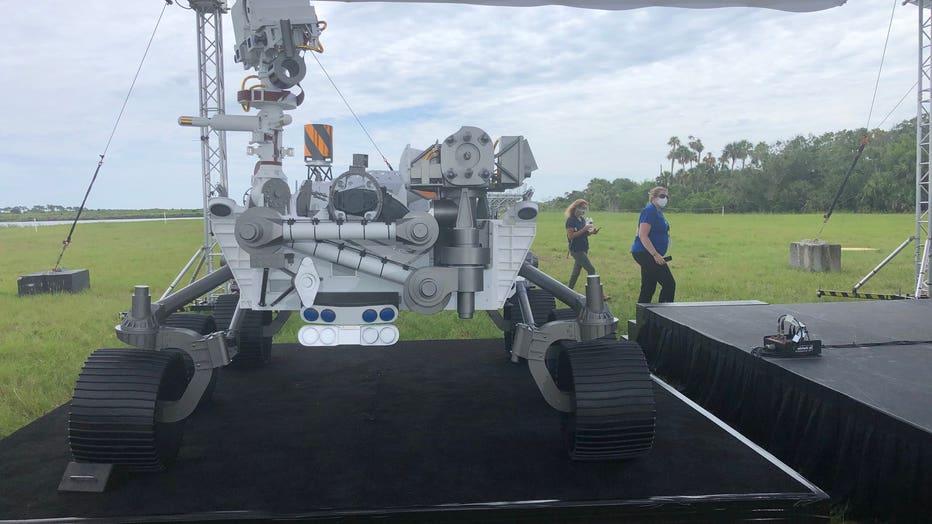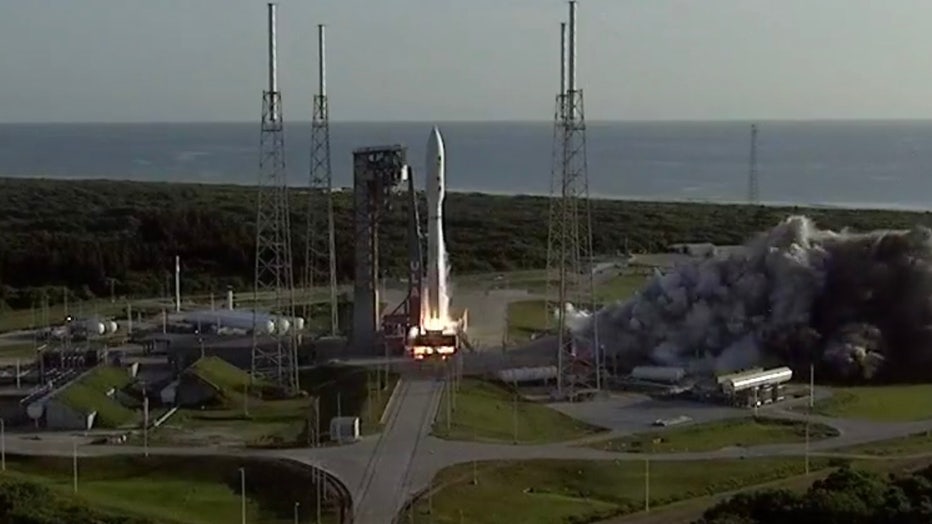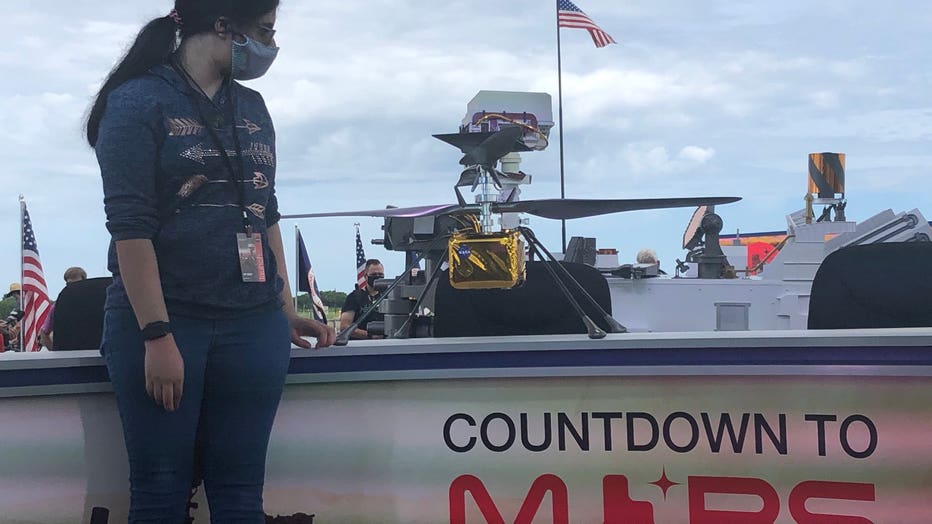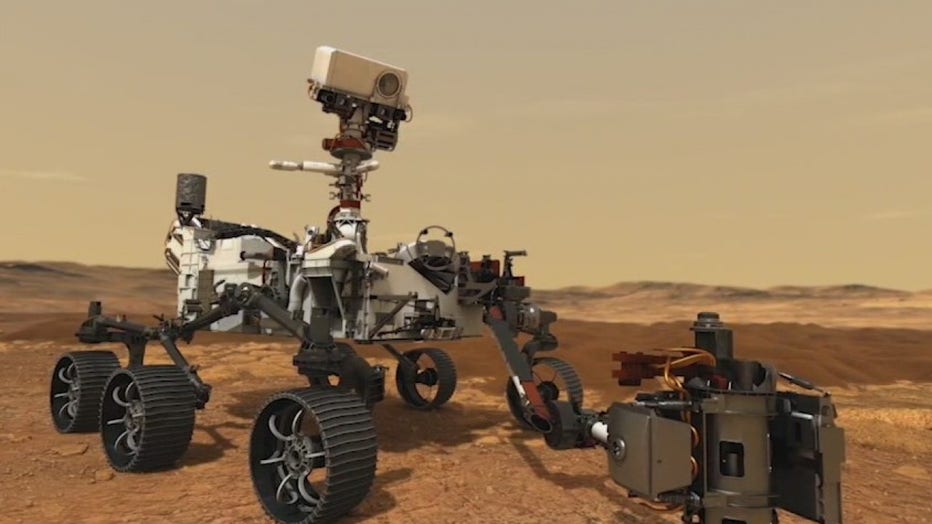Success! Mars rover 'Perseverance' launches into space

Perseverance Rover heading to Mars
United Launch Alliance sent the rover into space on Thursday morning.
CAPE CANAVERAL, Fla. - We are one step closer to putting humans on Mars.
United Launch Alliance (ULA) successfully launched the Mars 2020 Perseverance rover into space on Thursday. It traveled aboard the company's Atlas V rocket, lifting off from Space Launch Complex 41 at Cape Canaveral Air Force Station at 7:50 a.m.

Perseverance is reportedly NASA's latest Red Planet rover. It is scheduled to land on the planet, specifically at Jezero Crater, on February 18th, 2021.
Once there, it will search for astrobiological evidence of ancient microbial life on Mars. It will gather rock and soil samples for its future return to Earth while characterizing the planet's climate and geology.

ULA launch: Mission to Mars
United Launch Alliance (ULA) successfully launched the Mars 2020 Perseverance rover into space on Thursday.

The mission, which will pave the way for human exploration of Mars, is NASA's most ambitious Mars mission yet, totaling around $3 billion, NASA reported. The rover itself weighs just 2,300 pounds. It will carry along with it the 'Ingenuity Mars Helicopter,' marking the first attempt ever at powered, controlled flight on another planet.

Lori Glaze of NASA described the Perseverance rover as "the most sophisticated mission we’ve ever sent to the red planet‘s surface." The last Mars rover, 'Curiosity,' returned lots of insightful information, but Perseverance has many more capabilities.
RELATED: NASA's next Mars rover is brawniest and brainiest one yet
The six-wheeled, car-sized Perseverance is a copycat of NASA’s Curiosity rover, prowling Mars since 2012, but with more upgrades and bulk. Its 7-foot robotic arm has a stronger grip and bigger drill for collecting rock samples, and it’s packed with 23 cameras, most of them in color, plus two more on Ingenuity, the hitchhiking helicopter. The cameras will provide the first glimpse of a parachute billowing open at Mars, with two microphones letting Earthlings eavesdrop for the first time.
Once home to a river delta and lake, Jezero Crater is NASA's riskiest Martian landing site yet because of boulders and cliffs, hopefully avoided by the spacecraft's self-navigating systems. Perseverance has more self-driving capability, too, so it can cover more ground than Curiosity. The enhancements make for a higher mission price tag: nearly $3 billion.

It sports the latest landing tech, plus the most cameras and microphones ever assembled to capture the sights and sounds of Mars. Its super-sanitized sample return tubes — for rocks that could hold evidence of past Martian life — are the cleanest items ever bound for space. A helicopter is even tagging along for an otherworldly test flight.
RELATED: NASA sets date to bring astronauts from SpaceX Crew Dragon home
However, getting it to Mars is no easy prospect. Mars and Earth are only on the same side of the sun together once every 26 months. So, if for whatever reason the launch doesn’t happen and the rover has to go back into storage, it could cost NASA half a billion dollars.
With that said, this mission will be NASA's third and final one to Mars in 2020. The U.S. remains the only country to land successfully at Mars. If all goes well next February, Perseverance will become the ninth U.S. spacecraft to operate on the Martian surface.

Tune in to FOX 35 Orlando for live updates.

